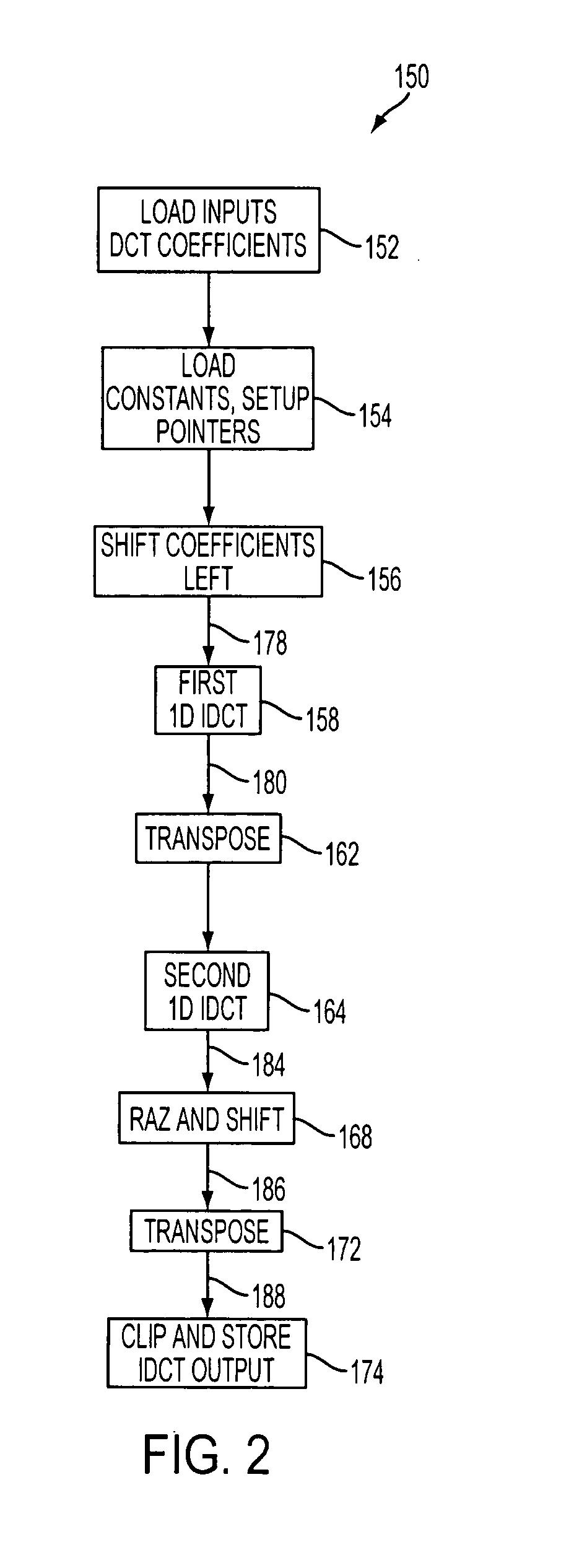Implementation of an inverse discrete cosine transform using single instruction multiple data instructions
a technology instruction multiple, which is applied in the field of implementation of inverse discrete cosine transform using single instruction multiple data instructions, can solve the problems of inconvenient implementation, still requires numerous calculations, and poor raw complexity, and achieves the effect of reducing the number of processor cycles needed
- Summary
- Abstract
- Description
- Claims
- Application Information
AI Technical Summary
Benefits of technology
Problems solved by technology
Method used
Image
Examples
Embodiment Construction
[0038]In one embodiment, the present invention is designed to provide for the decompression of compressed signals, such as compressed video signals, audio signals and the like, through the implementation of an Inverse Discrete Cosine Transform (IDCT). The method and apparatus in one embodiment of the present invention is implemented through a microprocessor, computer or dedicated hardware which can provide instructions and associated hardware to accelerate the execution of multimedia applications. In one embodiment, the present invention takes advantage of the parallel processing capabilities of processors or microprocessors.
[0039]FIG. 1 depicts a block diagram of one embodiment of the present invention implemented on a processor or microprocessor 130. One example of a processor that can be used to implement the present invention includes the SH5 microprocessor produced by Hitachi America, Ltd., New York. In one embodiment of the present invention, processor 130 includes a central p...
PUM
 Login to View More
Login to View More Abstract
Description
Claims
Application Information
 Login to View More
Login to View More - R&D
- Intellectual Property
- Life Sciences
- Materials
- Tech Scout
- Unparalleled Data Quality
- Higher Quality Content
- 60% Fewer Hallucinations
Browse by: Latest US Patents, China's latest patents, Technical Efficacy Thesaurus, Application Domain, Technology Topic, Popular Technical Reports.
© 2025 PatSnap. All rights reserved.Legal|Privacy policy|Modern Slavery Act Transparency Statement|Sitemap|About US| Contact US: help@patsnap.com



